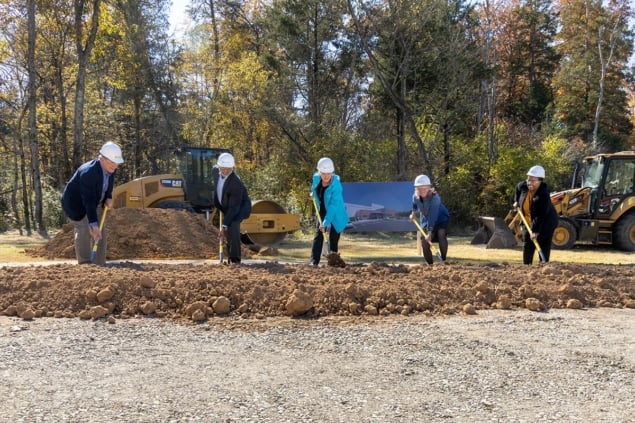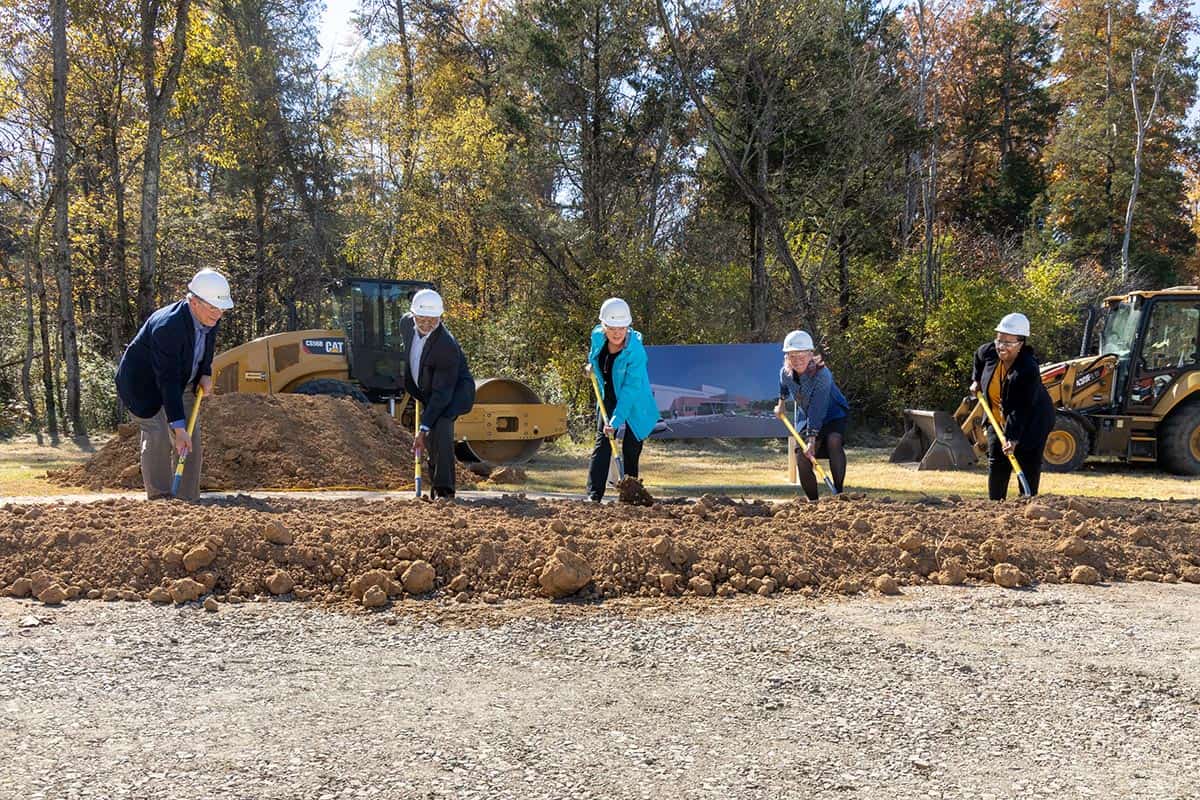
Officials celebrate the start of construction for the Stable Isotope Production Center at Oak Ridge National Laboratory in Tennessee. (Courtesy: Genevieve Martin/ORNL, US Dept. of Energy)
Construction has begun on a new facility in the US that will produce a wide range of isotopes including radioisotopes for medical applications. When it fires up in 2026, the Stable Isotope Production Center (SIPRC) at the Oak Ridge National Laboratory (ORNL) in Tennessee is expected to establish the US as a domestic and global supplier of radioisotopes to industry, government and research institutions.
Oak Ridge already produces, purifies and ships more than 300 isotopes for medical, research, industrial and space applications. “Providing isotopes that can’t be made anywhere else is central to our identity as a national laboratory,” says director Thomas Zacharia. “We are fortunate to have some of the most talented experts in the world.”
The current production of radioisotopes at Oak Ridge is based on three enrichment technologies: electromagnetic, gas centrifuge and plasma separation. SIPRC will house two of those technologies for large-scale production. Yet officials have refused to identify which techniques the new facility will use. Instead, they only note that the new centre will be capable of “simultaneously enriching multiple stable isotopes” from across the periodic table.
“The mission of the isotope programme is to reduce US dependence on overseas,” says Balendra Sutharshan, Oak Ridge’s associate laboratory director for isotope science and engineering. “Some important isotopes come from Russia – the only other country capable of producing radioisotopes in large quantities.”
Sutharshan says that isotopes that are used for cancer treatment will be “in great demand”. Those include lutetium-177 and carbon-14. Technetium-99m, meanwhile, has applications in imaging organs before and during treatments. Sutharshan notes that, while other US laboratories can produce some critical isotopes, Oak Ridge currently produces the greatest volume.
“We’ve picked up steam,” he adds, because we recognized that if we close our borders [to overseas suppliers], we cannot perform some of the medical procedures and industrial uses that we use now.”

US seeks to recharge semiconductor industry through $280bn CHIPS act
The Department of Energy (DOE) will provide $75m to support SIPRC, which will occupy about 6000 m2 on the Oak Ridge campus. This money will come from the $1.5bn Inflation Reduction Act, which is aimed at supporting “critical infrastructure upgrades and other projects at 13 national labs across the country”.
Other grants awarded from the act are expected to focus strongly on climate-friendly technologies. “The fundamental science and technology development that’s really occurring at the national labs can unlock the clean-energy technologies that we need to tackle climate change,” says US energy secretary Jennifer Granholm.
